Interaction between Humans and the Environment by Aliya S.
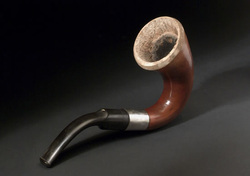
2/17/11
1. Tobacco drastically changed both the rural and urban environment in which Europe had been in, and eventually the pipe would be a symbol in which many people would be painted with. Though America had been the cradle for this cash crop, Europe was the one who exported it and used it for themselves. Spain in the early seventeenth century, had great portion of the tobacco trade in Europe which brought in a lot of money.
2. To meet the demands for tobacco, the Americas no doubt had to go overtime to fill the demands from Europe, which might of unintentionally cause some enviromental changes to the Americas. They would have to clear more area to make more farming land which would mean cutting down trees.
Image Analysis: Pipes were a big symbol in Europe for the longest time, as many painters would paint them in paintings, and it eventually became a stereotype for English gentlemen to have. Even famous icons such as Sherlock Holmes had a pipe because it seemed to add a certian amount of "class".
1. Tobacco drastically changed both the rural and urban environment in which Europe had been in, and eventually the pipe would be a symbol in which many people would be painted with. Though America had been the cradle for this cash crop, Europe was the one who exported it and used it for themselves. Spain in the early seventeenth century, had great portion of the tobacco trade in Europe which brought in a lot of money.
2. To meet the demands for tobacco, the Americas no doubt had to go overtime to fill the demands from Europe, which might of unintentionally cause some enviromental changes to the Americas. They would have to clear more area to make more farming land which would mean cutting down trees.
Image Analysis: Pipes were a big symbol in Europe for the longest time, as many painters would paint them in paintings, and it eventually became a stereotype for English gentlemen to have. Even famous icons such as Sherlock Holmes had a pipe because it seemed to add a certian amount of "class".
Development and Interaction of Cultures by Lauren G.
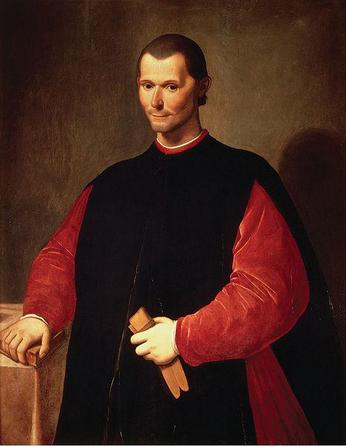
Source of Image: http://en.wikipedia.org/wiki/Niccol%C3%B2_Machiavelli
2/17/11
Religion
v Religion was not attacked by philosophers during the Renaissance
v The Northern Renaissance was based more in religion than the Italian Renaissance.
v During the 16th Century, there was a religious upheaval
o A German monk named Martin Luther decided to go against the church because he thought it was not doing the right things according to the Bible.
§ Lutheran Protestantism
o In England, King Henry VIII set up the Anglican church after challenging his first marriage
Belief systems, Philosophies, and Ideologies
v Niccolo Machiavelli discussed how to seize and maintain power
o He was a humanist
v Humanism- a focus on humankind as the center of intellectual and artistic endeavor.
v Niccolo Machiavelli was a major contributor to modern science.
Northern humanists were more based on religion.
Science and Technology
v Pulleys and pumps were introduced in mines for more productive work.
v New techniques for forging stronger iron were developed.
v In Germany movable type was introduces by Johannes Gutenberg.
v Renaissance was followed by the scientific revolution.
The Arts and Architecture
v The Renaissance was a period of new art
o Michael Angelo
o Leonardo da Vinci
v Literacy was beginning to gain ground
o Shakespeare in England
o Rabelais in France
v Classical styles in architecture became the rage.
Image Analysis:
Niccolo Machiavelli was a major contributor to modern political science.
Religion
v Religion was not attacked by philosophers during the Renaissance
v The Northern Renaissance was based more in religion than the Italian Renaissance.
v During the 16th Century, there was a religious upheaval
o A German monk named Martin Luther decided to go against the church because he thought it was not doing the right things according to the Bible.
§ Lutheran Protestantism
o In England, King Henry VIII set up the Anglican church after challenging his first marriage
Belief systems, Philosophies, and Ideologies
v Niccolo Machiavelli discussed how to seize and maintain power
o He was a humanist
v Humanism- a focus on humankind as the center of intellectual and artistic endeavor.
v Niccolo Machiavelli was a major contributor to modern science.
Northern humanists were more based on religion.
Science and Technology
v Pulleys and pumps were introduced in mines for more productive work.
v New techniques for forging stronger iron were developed.
v In Germany movable type was introduces by Johannes Gutenberg.
v Renaissance was followed by the scientific revolution.
The Arts and Architecture
v The Renaissance was a period of new art
o Michael Angelo
o Leonardo da Vinci
v Literacy was beginning to gain ground
o Shakespeare in England
o Rabelais in France
v Classical styles in architecture became the rage.
Image Analysis:
Niccolo Machiavelli was a major contributor to modern political science.
State-building, expansion, and conflict by David A.
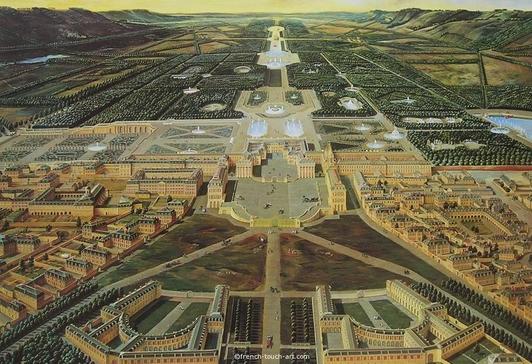
Source of image: http://www.french-touch-art.com/en-panorama_versailles.htm
2/16/11
* This picture of the Palace of Versailles is best representative of the State-Building of this time period as the building served as the nerve-center for all of France's ruling class at this time. Purposely designed for the creation of a State ideal for Louis XIV's plans it housed nearly all of France's aristocracy and served the purpose of manipulating everyone to allow Louis more complete control.
* The construction of Versailles could also be representative of the expansion of European nations such as France at this time. This included the vast amount of wealth nations such as France had been accumulating and the relocation of capitals and palaces to more secure/profitable regions available thanks to expansion.
* This picture of the Palace of Versailles is best representative of the State-Building of this time period as the building served as the nerve-center for all of France's ruling class at this time. Purposely designed for the creation of a State ideal for Louis XIV's plans it housed nearly all of France's aristocracy and served the purpose of manipulating everyone to allow Louis more complete control.
* The construction of Versailles could also be representative of the expansion of European nations such as France at this time. This included the vast amount of wealth nations such as France had been accumulating and the relocation of capitals and palaces to more secure/profitable regions available thanks to expansion.
Creation, expansion, and interaction of economic systems by Amanda A.
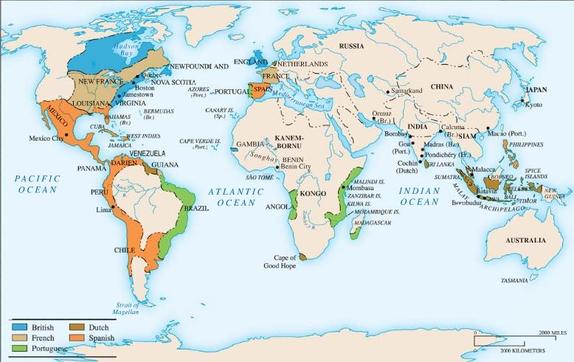
Source of image: http://www.myhistorylab.com
2/16/11
1. Western Europe experienced a commercial revolution in the era between 1450 and 1750. Silver from Spain increased the availability of more money, which encouraged merchants to take more risks. Great trading companies with monopolies on trade were established, like the Dutch East Indies Company and the British East Indies Company. Manufacturing was stimulated by colonial markets, and agricultural specialty areas arose among farmers.
2. Capitalism spread during this era. Capitalism is the investment of money in hopes of making a larger profit. Adam Smith wrote in Wealth of Nations that economies would regulate themselves if left to the people to work out.
Image Analysis:
During this period in world history, a world economy was established. In this world economy, nations in Western Europe were core nations -- nations that profited from the world economy by controlling international banking and commercial services, like shipping. Western Europe sought trading ports in many different areas of the world. They exported manufactured goods and imported raw materials from dependant zones for profit.
1. Western Europe experienced a commercial revolution in the era between 1450 and 1750. Silver from Spain increased the availability of more money, which encouraged merchants to take more risks. Great trading companies with monopolies on trade were established, like the Dutch East Indies Company and the British East Indies Company. Manufacturing was stimulated by colonial markets, and agricultural specialty areas arose among farmers.
2. Capitalism spread during this era. Capitalism is the investment of money in hopes of making a larger profit. Adam Smith wrote in Wealth of Nations that economies would regulate themselves if left to the people to work out.
Image Analysis:
During this period in world history, a world economy was established. In this world economy, nations in Western Europe were core nations -- nations that profited from the world economy by controlling international banking and commercial services, like shipping. Western Europe sought trading ports in many different areas of the world. They exported manufactured goods and imported raw materials from dependant zones for profit.
Development and Transformation of social structures by Sar A.
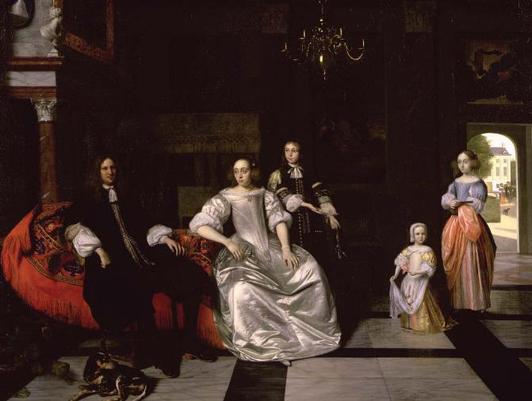
Source of image: http://www.myhistorylab.com/
2/16/11
Children’s Status
The way children were brought up in Western society at this time changed drastically. Before, children were seen as sinners and needed adults to bring them into submission. But by the time of the Enlightenment, they were thought of as innocent beings that had the capacity for improvement and education.
Women’s Status
Women were already beginning to argue that the newly-found rights that were for men should also be for women as well. Women were writing journals and pamphlets for other women explaining why men shared the blame for women’s lowly position in the world.
Analysis: Here, there are children included in a truly family portrait. Western Europe began to include their children in a lot more things than ever before and started to spend more time with them as well.
Children’s Status
The way children were brought up in Western society at this time changed drastically. Before, children were seen as sinners and needed adults to bring them into submission. But by the time of the Enlightenment, they were thought of as innocent beings that had the capacity for improvement and education.
Women’s Status
Women were already beginning to argue that the newly-found rights that were for men should also be for women as well. Women were writing journals and pamphlets for other women explaining why men shared the blame for women’s lowly position in the world.
Analysis: Here, there are children included in a truly family portrait. Western Europe began to include their children in a lot more things than ever before and started to spend more time with them as well.
